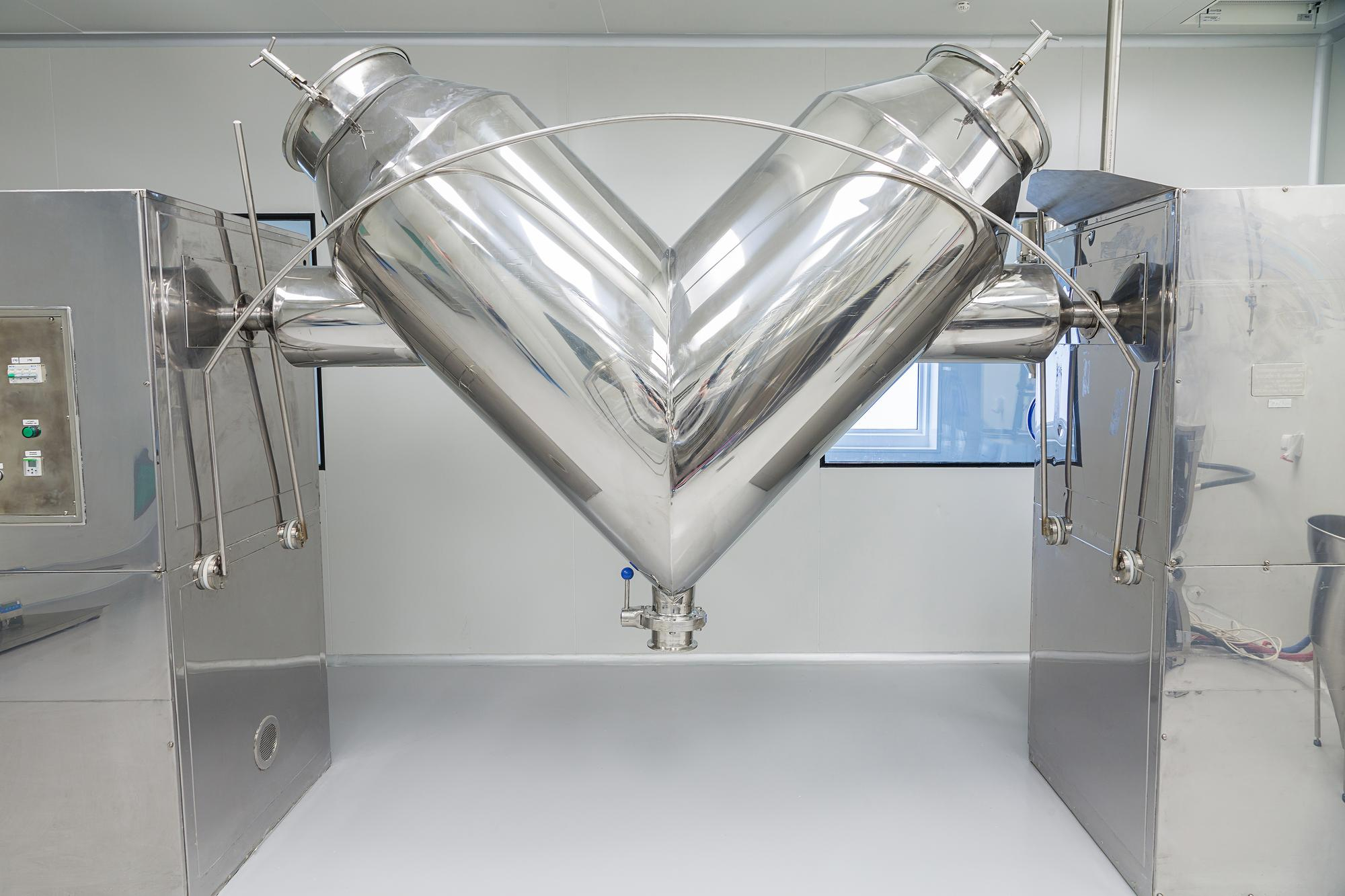

Problems
Our solution
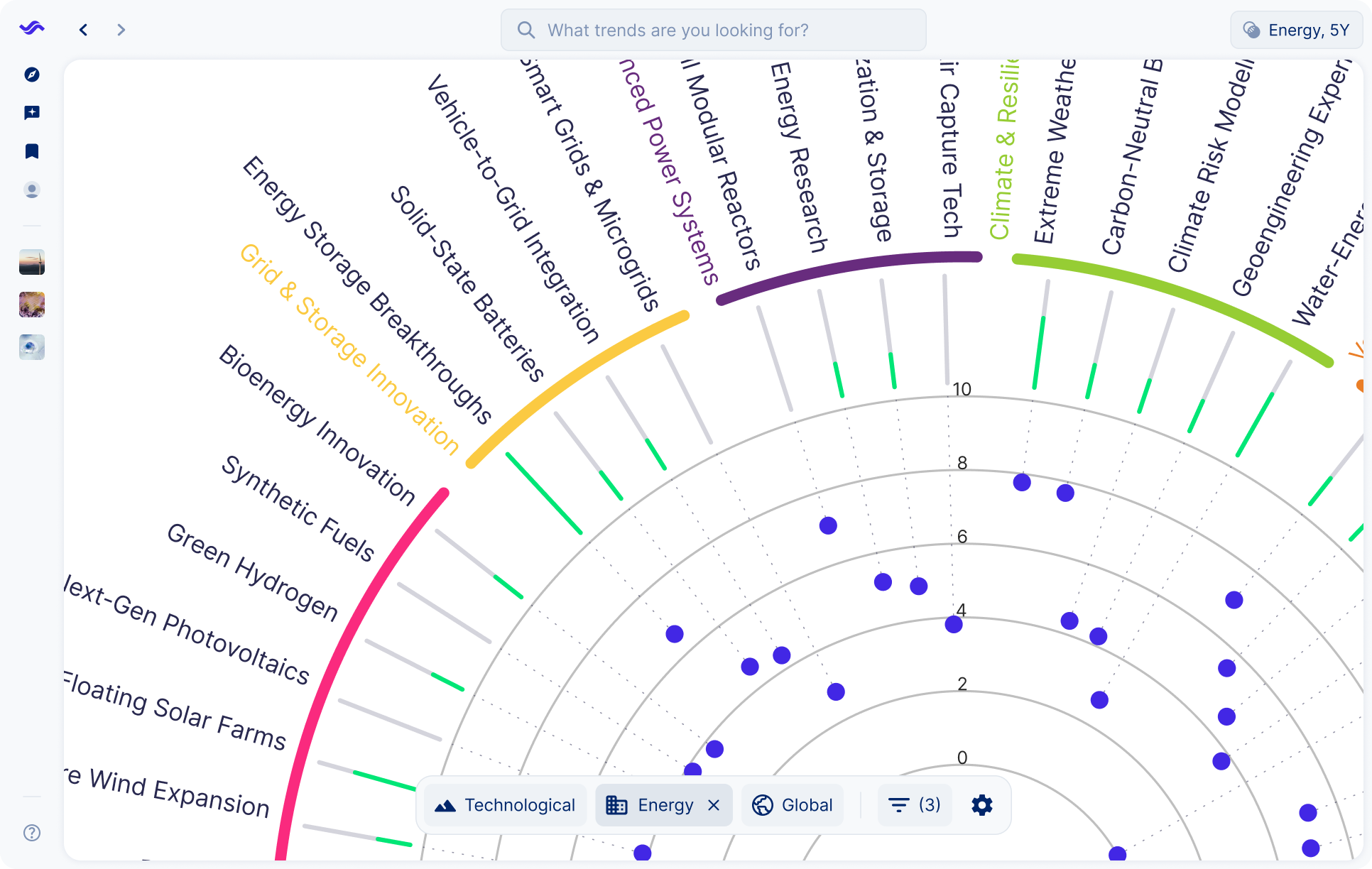
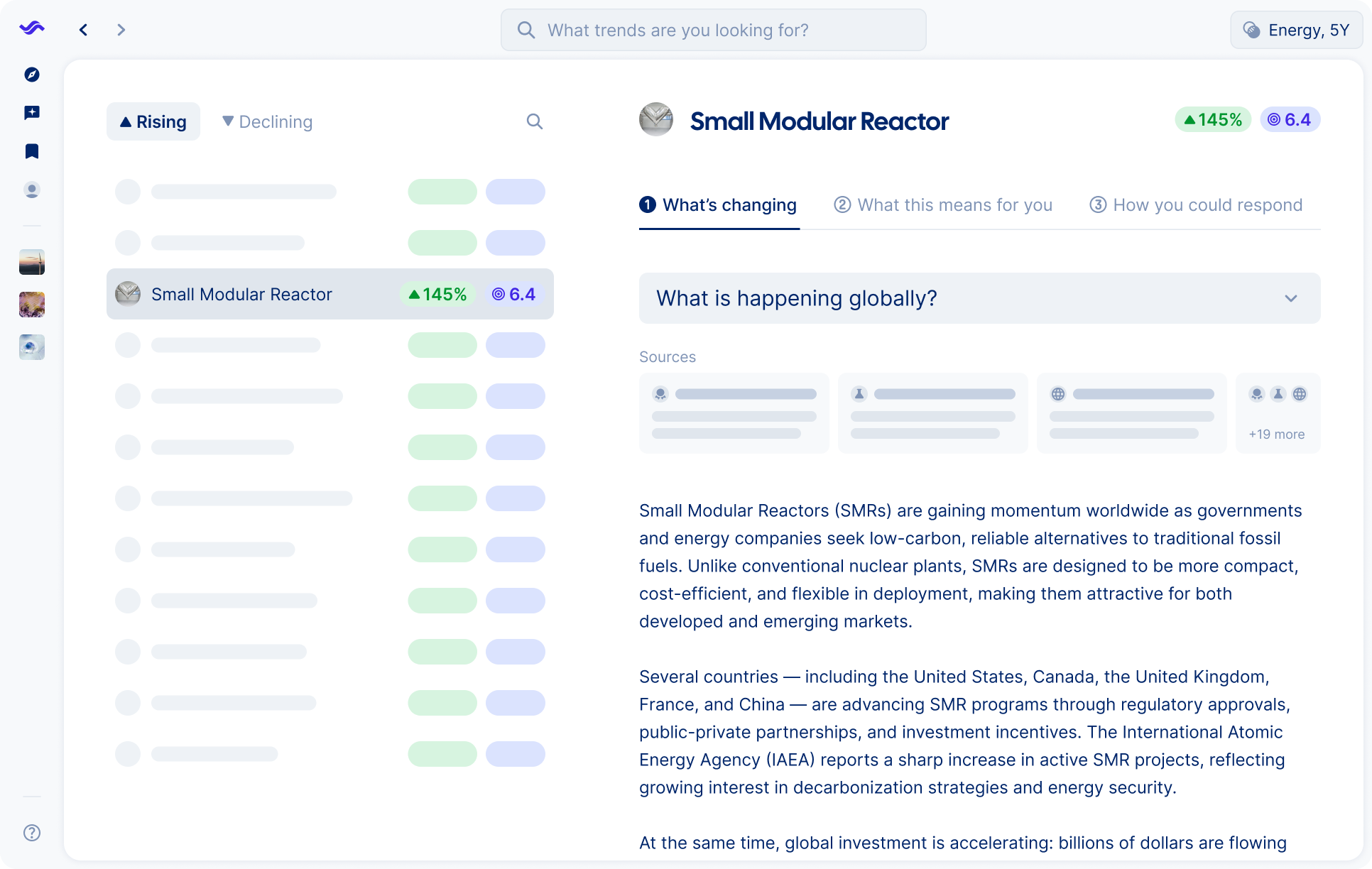
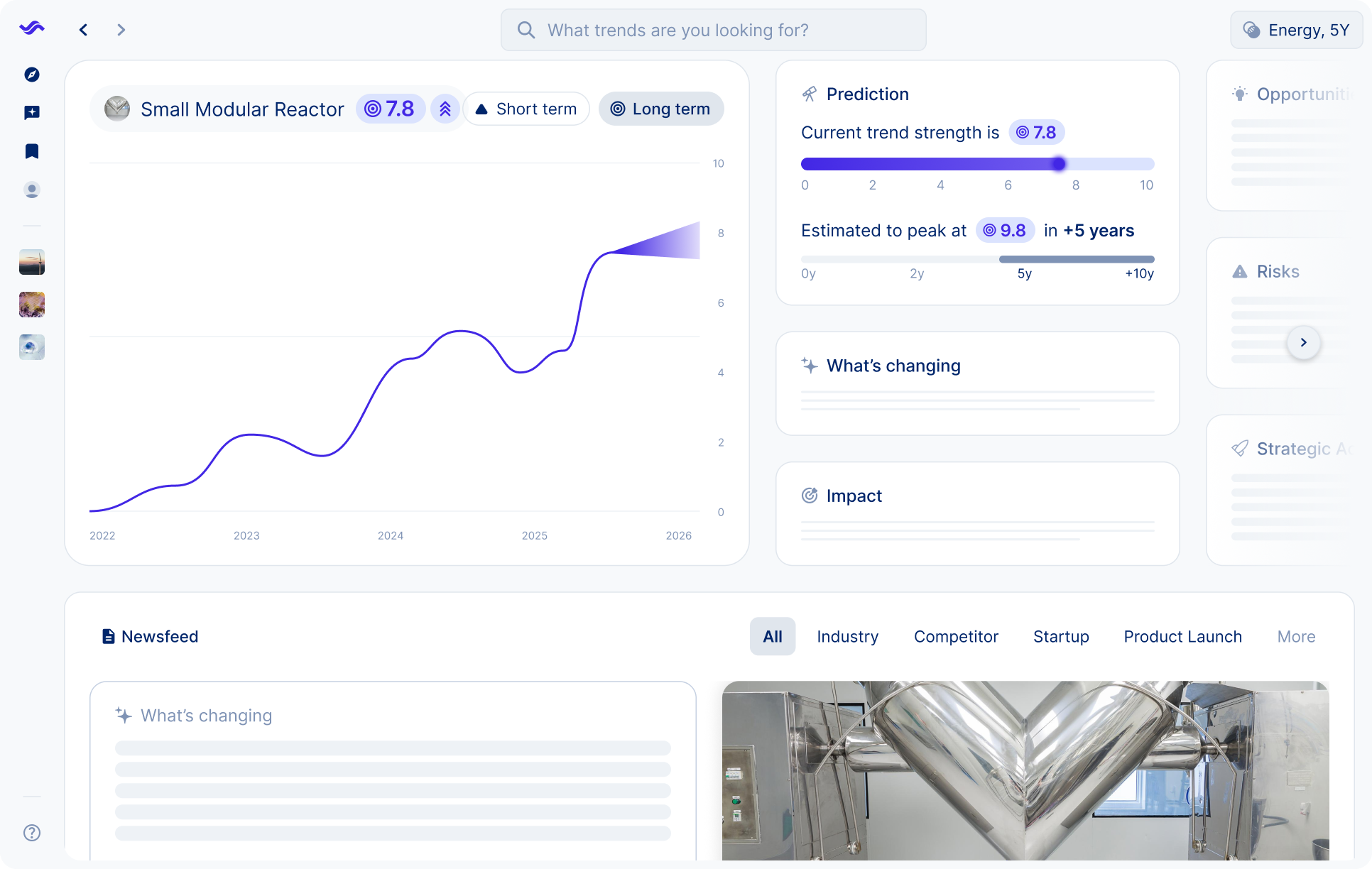
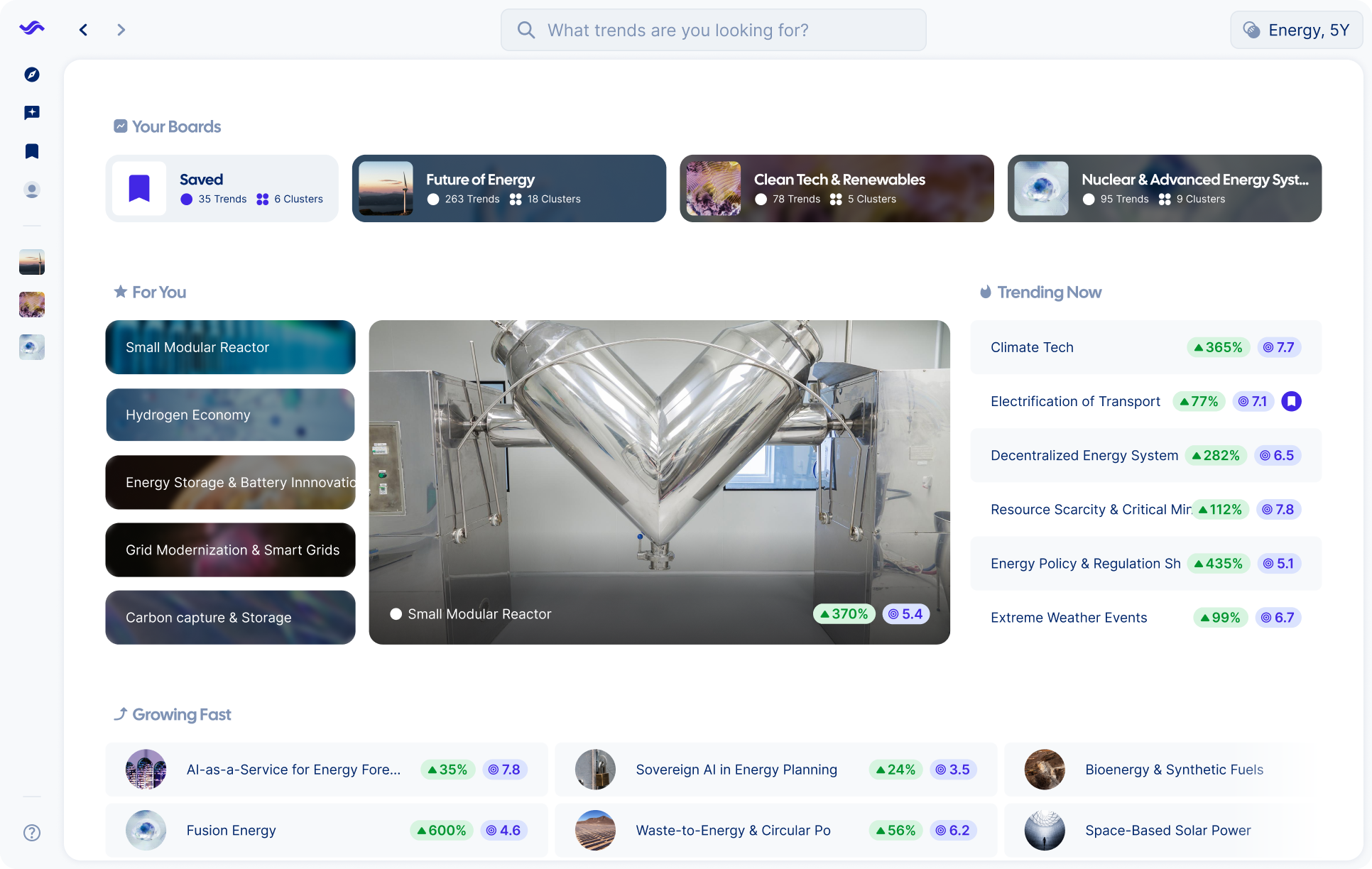

See your global energy landscape clearly
AI Analyst for energy leaders
Track trends in real time
Spot opportunities sooner than anyone else
Key benefits
Strategists trust Trendtracker to turn data overload into instant, actionable insights.
Trends in the industry


Interest in small modular reactors is growing as countries invest in projects to support clean energy and decarbonization. Their lower cost and flexibility make them attractive for both national grids and remote locations, though regulatory hurdles and long timelines remain.
SMRs are positioning nuclear as a more scalable and adaptable energy option. They can provide stable low carbon electricity, complement renewables, and reduce dependency on fossil fuels. This creates opportunities for utilities and governments but also raises compliance and safety demands.
Energy companies can pursue partnerships to pilot SMRs, integrate them with renewable sources, and prepare infrastructure for deployment. Building regulatory alignment and securing investment in research and local projects will be critical to achieving long term impact.


Global investment in green hydrogen is accelerating, supported by major partnerships and large-scale infrastructure projects. Despite setbacks in some markets, companies are advancing technologies and cross-border collaborations to lower costs and expand deployment.
Green hydrogen is emerging as a cornerstone of the clean energy transition. It offers a pathway to decarbonize heavy industry and transport, reduce reliance on fossil fuels, and align with regulatory and climate targets. Competition is intensifying as utilities and governments push for early leadership.
Energy players should scale pilot projects, integrate hydrogen into grids, and expand international alliances. Investment in advanced production and storage technologies, alongside clear regulatory alignment, will be essential for building long-term competitiveness.


Governments and companies are investing heavily in carbon capture and storage as a way to meet decarbonization goals. Advances in technologies such as direct air capture and bioenergy with CCS are improving efficiency, while new international projects signal growing momentum across industries.
CCS is moving from experimental to strategic. Energy and industrial firms see it as vital to cutting emissions and meeting regulatory targets, while governments view it as a pathway to climate commitments. The technology is also becoming a differentiator for companies competing in carbon-conscious markets.
Energy players should accelerate partnerships, invest in scalable CCS projects, and align with regulators to secure compliance and incentives. Expanding collaborations across borders and industries will be critical for reducing costs, strengthening resilience, and unlocking long-term growth opportunities.
Want to discover, analyse and forecast energy trends? See how Trendtracker’s AI turns information overload into instant, actionable clarity for energy strategists.
The global energy sector is undergoing one of its most significant transitions in decades. Driven by climate commitments, geopolitical pressures, and rapid technological innovation, the industry faces both unprecedented challenges and opportunities. From the rise of advanced nuclear technologies to the scaling of green hydrogen and the deployment of carbon capture, energy leaders must rethink their strategies to balance resilience, sustainability, and profitability.Below we highlight three key clusters shaping the energy landscape, each with emerging trends that are becoming essential for long-term growth and competitive positioning.
The global energy system is being redefined by technologies that promise both resilience and decarbonization. As demand grows and climate goals tighten, leaders are looking beyond traditional renewables toward solutions that can deliver stable, scalable, and sustainable power. Innovations like small modular reactors, green hydrogen, and carbon capture are moving from pilots to large-scale deployment, reshaping how energy is produced, stored, and consumed.
Today’s landscape
Energy security is back at the top of the agenda, and Small Modular Reactors are drawing attention as a flexible, lower-cost alternative to large nuclear plants. Unlike traditional reactors, SMRs can be deployed faster and in more locations, offering consistent baseload power while supporting decarbonization goals. Governments in the UK, Canada, and Eastern Europe are already investing heavily, testing how SMRs can fit into future energy grids.
The road ahead
Over the next decade, SMRs could become a cornerstone of reliable low-carbon energy systems. They will likely be paired with renewables and hydrogen production, supporting grid stability as more intermittent sources come online. However, adoption will depend on navigating regulatory hurdles and ensuring public trust in nuclear technology.
PESTLE: Political/Legal (P/L), Economic (Econ), Environmental (Env), Technological (Tech)
Horizon: Mid- to long-term (5–15y)
Strategic action: Energy leaders should explore partnerships in pilot projects, engage early with regulators, and invest in R&D to drive down costs. Positioning now could secure an advantage in supplying stable, carbon-free energy to industries and cities.
Today’s landscape
Green hydrogen is moving from buzzword to reality. Projects are ramping up across Europe, Asia, and the Middle East, with governments and utilities investing in electrolysis capacity. The promise is clear: a fuel that decarbonizes heavy industry, long-haul transport, and energy storage. Costs remain high, and infrastructure gaps still hold back scale.
The road ahead
Green hydrogen is set to become a critical enabler of net-zero targets. Falling renewable energy prices, combined with scaling electrolyzer production, will bring costs down. Countries are competing to secure leadership in green hydrogen exports, creating new geopolitical dynamics in energy trade.
PESTLE: Economic (Econ), Environmental (Env), Political/Legal (P/L), Technological (Tech)
Horizon: Mid-term (5–10y)
Strategic action: Companies should pilot green hydrogen integration into industrial processes and transport, while forging cross-border partnerships for supply chains. Early movers can shape global standards and capture new market share.
Today’s landscape
Despite criticism in the past, CCS is gaining momentum as oil, gas, and industrial players seek practical ways to cut emissions. Governments from the US to Asia are offering incentives, and new technologies are reducing costs. CCS is no longer seen as a distraction, but as a complementary tool alongside renewables and efficiency improvements.
The road ahead
Expect CCS to play a bigger role in hard-to-abate sectors like steel, cement, and chemicals. Combined with bioenergy (BECCS), it could even deliver negative emissions. The key challenge will be scaling infrastructure quickly enough while balancing costs, public acceptance, and regulatory compliance.
PESTLE: Environmental (Env), Political/Legal (P/L), Economic (Econ), Technological (Tech)
Horizon: Near- to mid-term (0–10y)
Strategic action: Leaders should evaluate CCS as part of their net-zero strategy, partner with industrial emitters, and engage policymakers to shape favorable regulatory frameworks. Treat CCS not as a fallback, but as a competitive edge in sustainability positioning.

The energy sector is not just about generation but about intelligence. With more distributed assets coming online, from solar rooftops to EV charging networks, the grid is becoming increasingly complex. To manage this, utilities and energy companies are turning to AI, real-time monitoring, and predictive systems that make infrastructure smarter, more resilient, and more efficient. These technologies are redefining how energy is balanced, delivered, and consumed.
Today’s landscape
Aging infrastructure and new renewable assets are stretching utilities thin. Predictive maintenance, powered by sensors and AI, is being deployed to anticipate failures before they happen. It reduces downtime, cuts costs, and improves safety — a major advantage as grids integrate more intermittent sources like wind and solar.
The road ahead
Predictive maintenance will become standard across utilities and energy-intensive industries. As data models improve, they will not only anticipate equipment failures but also optimize performance and extend asset life cycles. This shift could significantly reduce the cost of the energy transition.
PESTLE: Technological (Tech), Economic (Econ), Environmental (Env)
Horizon: Near- to mid-term (0–5 years)
Strategic action: Energy companies should scale predictive analytics pilots into enterprise-wide systems, building strong data infrastructures and training workforces to act on AI-driven insights.
Today’s landscape
Grid operators are facing new challenges as distributed energy resources multiply. Real-time monitoring technologies allow them to track fluctuations in supply and demand, prevent outages, and ensure reliability. Increasingly, this is being extended to consumers, giving households and businesses visibility into their energy use.
The road ahead
As electrification accelerates, real-time monitoring will underpin the future of demand-side management. From EV charging to industrial load balancing, it will help smooth peaks and avoid costly grid expansions. It also creates new opportunities for customer engagement and services.
PESTLE: Technological (Tech), Environmental (Env), Social (S)
Horizon: Near-term (0–3y)
Strategic action: Utilities should invest in digital twins and IoT-enabled infrastructure, ensuring transparency and resilience while unlocking new customer-facing services.
Today’s landscape
Traditional grids were not designed for two-way flows of energy. Smart grids are emerging to fill this gap, integrating renewables, storage, and digital controls. They enable decentralized generation and make grids more adaptable to climate and demand pressures. Early projects in Europe and Asia are already showing measurable efficiency gains.
The road ahead
Smart grids will be essential for scaling renewable integration. They will also underpin new energy markets where consumers become producers, selling surplus power back to the grid. Regulatory clarity and investment in infrastructure will determine how quickly this shift materializes.
PESTLE: Technological (Tech), Political/Legal (P/L), Economic (Econ), Environmental (Env)
Horizon: Near-term (0–3 years)
Strategic action: Energy leaders should push for partnerships with regulators, tech firms, and municipalities to accelerate smart grid rollouts, ensuring equitable access and securing early leadership in future energy markets.

Energy transition isn’t just about producing cleaner power — it’s about rethinking the entire lifecycle of energy systems. From capturing carbon emissions to reusing critical materials, sustainability and circularity are moving to the forefront. Governments, investors, and consumers are demanding that the energy sector not only deliver on decarbonization but also prove long-term resilience and responsibility across supply chains.
Today’s landscape
CCS is gaining momentum as industries and governments look for solutions to meet climate goals while maintaining energy reliability. Oil and gas companies, in particular, are investing heavily, positioning CCS as a tool for both decarbonization and industry survival.
The road ahead
As costs decline and technologies mature, CCS will expand beyond pilot projects to large-scale deployment. It will likely be combined with bioenergy (BECCS) or hydrogen production, strengthening its role in achieving net-zero targets.
PESTLE: Environmental (Env), Political/Legal (P/L), Economic (Econ), Technological (Tech)
Horizon: Mid-term (5–10y)
Strategic action: Energy leaders should integrate CCS into long-term portfolios, pursuing partnerships and financing mechanisms that spread risk while meeting regulatory and investor pressures.
Today’s landscape
Wind turbines, solar panels, and batteries are booming — but so is the waste problem. Rare earths, lithium, and other critical materials are in short supply, and recycling technologies are struggling to keep pace. Circular practices are emerging to address these bottlenecks.
The road ahead
Circular energy materials will be a defining feature of the next phase of the transition. Companies that successfully close the loop on battery recycling or turbine blade reuse will gain cost advantages and secure supply resilience in a highly competitive market.
PESTLE: Environmental (Env), Economic (Econ), Technological (Tech)
Horizon: Mid- to long-term (5–15y)
Strategic action: Build recycling and materials recovery into core business strategies, while forging alliances with governments and manufacturers to scale industrial solutions.
Today’s landscape
Banks and investors are redirecting capital toward sustainable projects, with green bonds and ESG-linked financing reshaping energy investment flows. Access to funding is increasingly tied to environmental performance and transparency.
The road ahead
Sustainable finance will become a competitive differentiator. Companies that cannot prove credible sustainability strategies risk losing access to capital, while those that align with ESG frameworks will attract stronger partnerships and long-term investors.
PESTLE: Economic (Econ), Political/Legal (P/L), Social (S)
Horizon: Near- to mid-term (0–5 years)
Strategic action: Integrate ESG goals into strategic roadmaps, ensuring transparency in reporting and leveraging sustainability as a value driver for attracting capital and partners.
